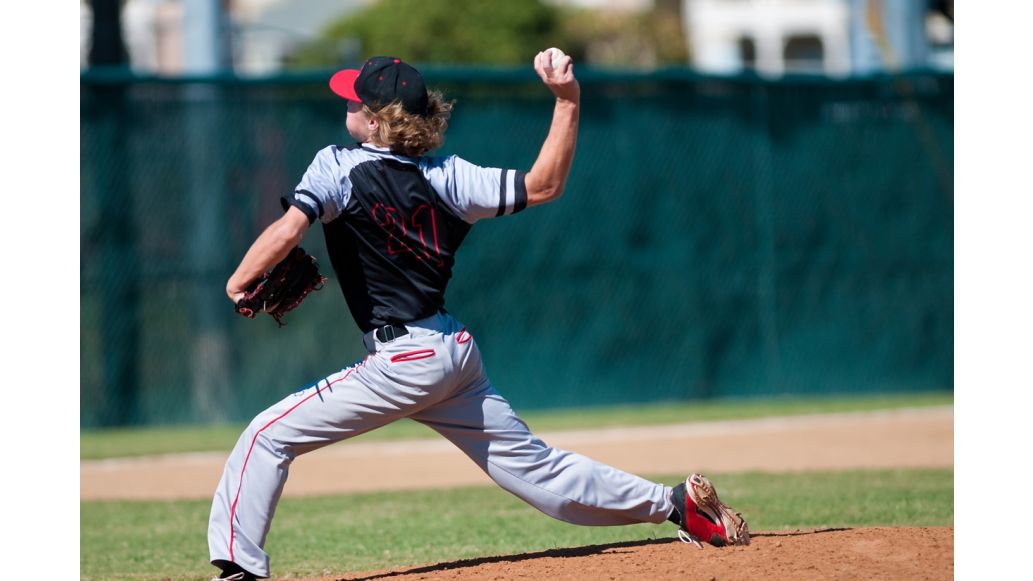It’s a common misconception that the key to powerful pitching is having a strong right (or left) arm. While this does help, it isn’t the full story. As a pitcher, your ball-velocity is generated from several parts of the body. The three main drivers of speed are the core, shoulders, and legs. Building muscles in these three areas can be the difference between a strikeout and a batter teeing off on your pitch. (Looking for exercises to help hit farther? We’ve got those too.)
Now that you know what muscles you need to workout, here are some of our favorite exercises that target those specific muscles:
Legs
Every good pitch starts with a strong base. Like a boxer using his legs to drive into the ground, pitchers need powerful legs to propel their pitches.
1. TheraBand Knee Squat (Euro-Cross)
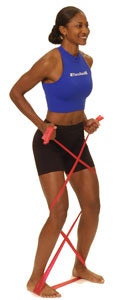
- Place your feet on the middle of a TheraBand Resistance Band
- Pro Tip: As you progress, begin using more resistant bands
- Wrap the ends of the band around the outside of your feet, then behind your knees, finishing by coming around the front of your thighs
- Hold the ends tightly next to your hips with no slack remaining
- Lower your trunk into a sitting position and then stand back up by bending at the knees
- Pro Tip: For best results, keep your knees facing forward, back straight, and elbows at 90-degree angles
2. TheraBand Loop Ankle Plantarflexion

- From a seated position, firmly wrap a TheraBand resistance band around the bottom of your foot to the top of your thigh.
- Push down on the tips of your toes while lifting your ankles, then return to the starting position
This exercise will target the calves for lower leg strength.
Core
Moving up the body, your core is the next place that will generate power while pitching. As you go through the pitching motion, your hips should go from facing a dugout to facing the batter.
This rotation creates more force behind your pitches. That means that the core muscles play a crucial part in speeding up a pitch.
3. CLX Rotation Plank
Note: Rotation Plank is the second featured exercise in the video.
- Enter a push-up position with a flat back and hands shoulder-width apart
- Pro Tip: Use a yoga mat to pad the ground
- Place four fingers of each hand through the loop of a CLX Band with little slack between your hands
- Open your chest and hips in one direction, raising your hand straight up
- You should feel the resistance of the band when trying to move your arm
- Slowly return to the starting position
Shoulders
Strong biceps and triceps are not the most important factor in pitching power; there are better muscles to focus on to increase your velocity. Having a strong shoulder is the key to pitch speed when it comes to your arms. In a normal pitching motion, the rotation of the arm, using the muscles around the shoulder, is where the ball gains its momentum.
4. CLX Shoulder Dynamic Hug
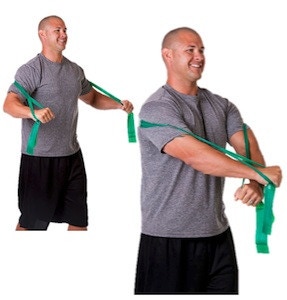
- Place each hand through a loop of a CLX Band
- Pro Tip: Putting your hands 2-3 loops apart provides a challenging exercise
- Wrap the band around your back with your elbows raised slightly above your ribs and hands in front
- Keeping your arms raised, push your hands forward and towards each other until they cross
- Slowly release your arms into the beginning position
5. Reverse Throw Exercise
- Stagger your feet so one foot is almost entirely behind the other, then place the loop of a CLX Band around the base of your forward foot
- Hold the CLX Band in the opposite hand
- Lift your hand up towards the side of your head, then rotate your hips and continue to move your arm backward
- This should resemble the motion of pitching in a reverse order
- Release by rapidly returning to the starting position
Bonus: Improving Control
Like the upper arms, forearms don’t generate the same amount of power as the shoulders. However, a strong grip improves control and increase movement on pitches.
TheraBand Loop Wrist Curl
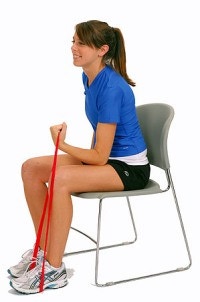
- Place one end of a TheraBand Loop under your foot
- Grab the other end in your palm, resting the back of your hand on your thigh
- Bend arm upward and toward your chest, then slowly release
Power isn’t the only aspect that makes a good pitcher. Precision, decision making, and a number of other skills are required to take your game up a notch. Along with increasing your strength, be sure to practice control and accuracy as often as possible. Put in the work and you’ll see the results!
References
Ellis, S. (2019, June 4). 19 Best Exercises For Baseball Pitchers. Retrieved from https://bit.ly/2KECfwl
Fastballs Get Power from the Pitcher's Waist. (2016, April 11). Retrieved from https://bit.ly/2Ka1tmO
Medical Disclaimer: The information provided on this site, including text, graphics, images and other material, are for informational purposes only and are not intended to substitute for professional medical advice, diagnosis or treatment. Always seek the advice of your physician or other healthcare professional with any questions or concerns you may have regarding your condition.

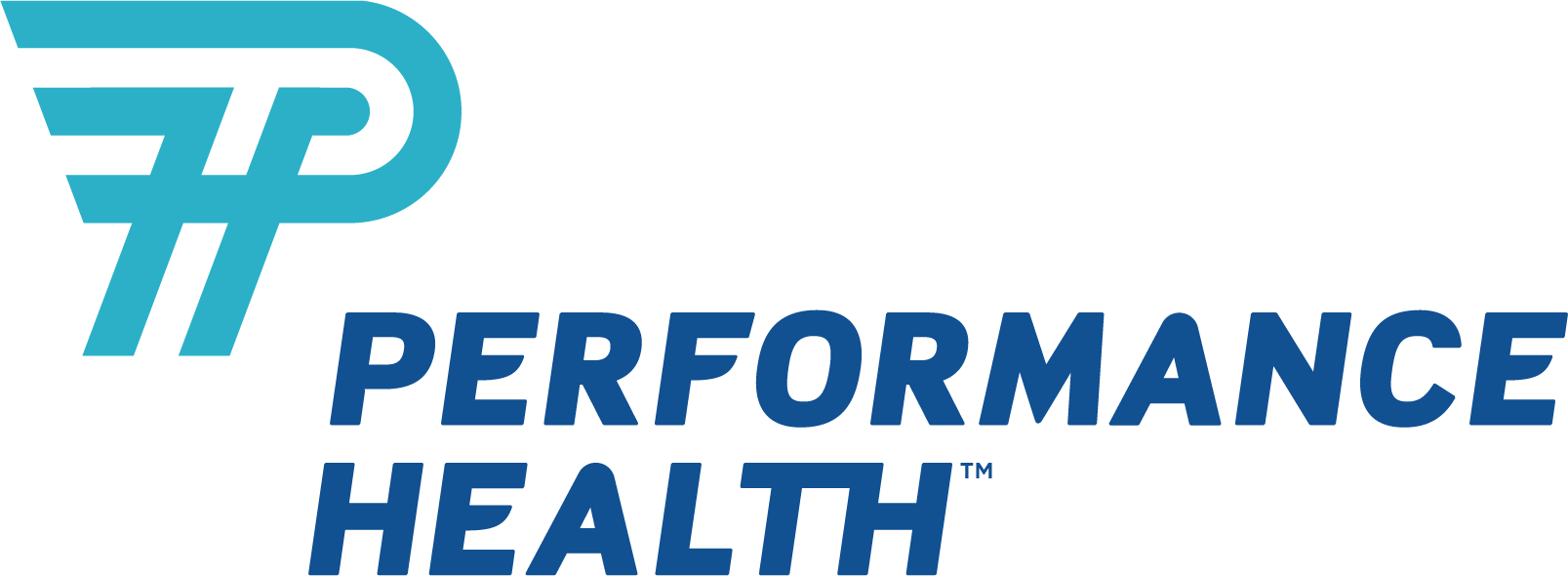






 France
France Australia
Australia